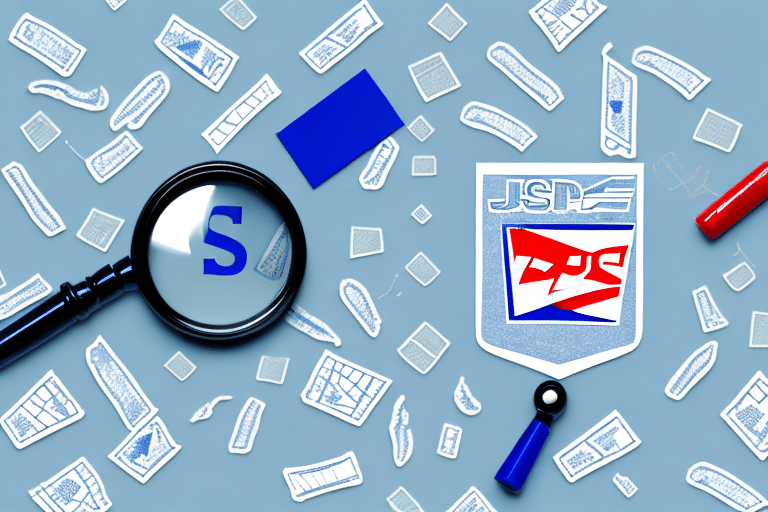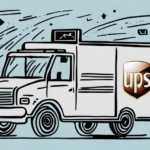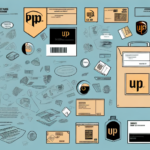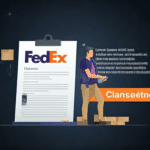Introduction to USPS Insurance
Are you planning to ship a valuable item through USPS? Worried about the potential damage or loss of your package? Choosing the right USPS insurance plan can provide you with peace of mind. In this comprehensive guide, we'll cover everything you need to know about USPS insurance, including the different types of plans and how to file a claim for damaged or lost packages.
Why You Need USPS Insurance
Shipping valuable items comes with inherent risks, such as mishandling, damage, or loss. Without appropriate insurance, you may be responsible for the full cost of replacing lost or damaged goods. USPS insurance offers financial protection against these potential issues, ensuring you're not left with unexpected expenses.
Additionally, having USPS insurance helps maintain trust with your customers. In the event of a lost or damaged package, you can promptly file a claim and offer refunds or replacements without incurring significant costs.
Investing in USPS insurance is often more economical than the potential loss of expensive items, safeguarding your business against unforeseen challenges.
Types of USPS Insurance Plans
USPS offers various insurance options tailored to different shipping needs. The primary insurance plans include:
- First-Class Mail Package Insurance - Provides coverage up to $100 for lost or damaged packages.
- Priority Mail & Priority Mail Express Insurance - Offers coverage up to $5,000, catering to higher-value shipments.
- USPS Retail Ground Insurance - Covers up to $50 for lost or damaged packages.
Choosing the appropriate insurance plan depends on the value of the items you're shipping. For valuable goods, opting for higher coverage is advisable.
For more details, visit the official USPS Insurance Page.
Cost of USPS Insurance
The cost of USPS insurance varies based on the value of the item and the type of service selected. Generally, insurance fees start at a low rate and increase with the declared value of the package.
- First-Class Mail Package Insurance: Starts at $2.45 for coverage up to $50.
- Priority Mail Insurance: Starts at $1.25 for coverage up to $50, with incremental increases for higher coverage amounts.
- Priority Mail Express Insurance: Pricing varies based on the level of coverage required.
For precise and up-to-date pricing information, refer to the USPS Insurance Pricing Guide.
How to Choose the Right USPS Insurance Plan
Selecting the appropriate USPS insurance plan is crucial to ensure your package is adequately protected in the event of loss or damage. Consider the following factors when choosing a plan:
- Value of the Item: Higher-value items require higher coverage limits.
- Weight and Size: Larger or heavier packages may necessitate different insurance options.
- Shipping Destination: Domestic and international shipments may have different insurance requirements.
You can purchase USPS insurance online through the USPS website or at your local post office.
Note that USPS insurance only covers the cost of the item being shipped and does not include shipping fees or taxes. For comprehensive coverage, including the cost of shipping, consider third-party insurance providers.
What Is Covered by USPS Insurance?
USPS insurance coverage varies by plan but generally includes protection against loss, damage, or missing contents of a package. In the event of a lost or damaged package, ensuring you have your USPS tracking information is essential for filing a claim effectively.
However, it's important to note that USPS insurance does not cover certain items, such as cash, jewelry, perishable goods, and hazardous materials. For these items, additional insurance or alternative shipping methods may be necessary.
USPS also offers additional services like signature confirmation and restricted delivery, which provide extra security for valuable or sensitive packages. These services may incur additional costs but offer enhanced protection.
How to File a Claim with USPS
If your package is lost or damaged during shipping, you may be eligible for a refund or reimbursement through USPS. The claims process varies depending on the insurance plan you selected. Generally, you'll need to provide evidence of the item's value and proof that it was shipped via USPS.
- Online Claims: Visit the USPS Claims Page to submit your claim electronically.
- In-Person Claims: Visit your local USPS office to file a claim in person.
Ensure you file your claim within the specified time frames:
- Damaged Packages: Within 60 days of the mailing date.
- Lost Packages: Within 6 months of the mailing date.
For international shipments, additional documentation such as customs forms and proof of value may be required. Review the USPS International Forms for more information.
USPS Insurance vs. Private Shipping Insurance
When deciding between USPS insurance and private shipping insurance, consider factors such as cost, coverage limits, and the provider's reputation. Generally, USPS insurance is more affordable and provides sufficient coverage for most shipping needs.
However, private shipping insurance may offer additional benefits like faster claims processing, personalized customer service, and coverage for items that USPS does not insure, such as high-value or extremely fragile items.
Evaluate your specific shipping requirements and compare the offerings of both USPS and private insurers to determine the best fit for your needs.
Understanding USPS Insurance Limits and Restrictions
Before selecting a USPS insurance plan, it's essential to understand the coverage limits and restrictions:
- Exclusions: Live animals, perishable items, antiques, and cash are typically not covered.
- Coverage Limits: Vary by insurance plan, with Priority Mail offering up to $5,000 in coverage.
- Automatic Coverage: Some USPS shipping services, like Priority Mail Express, include automatic insurance up to a certain amount.
Additionally, USPS insurance does not cover damages caused by improper packaging or handling after delivery. To ensure maximum protection, adhere to USPS packaging guidelines and handle your packages with care.
For comprehensive details, review the USPS Insurance Terms and Conditions.
Tips for Preventing Package Damage or Loss
While USPS insurance provides financial protection, taking proactive measures can help minimize the risk of package damage or loss:
- Use Sturdy Packaging: Choose durable boxes and reinforce them with strong tape.
- Label as Fragile: Clearly mark packages that contain delicate items.
- Double-Check Addresses: Ensure shipping information is accurate to avoid delivery issues.
- Utilize Tracking: Use USPS tracking services to monitor your package's status in real-time.
- Proper Cushioning: Protect items with bubble wrap, packing peanuts, or other cushioning materials to prevent movement during transit.
Choosing the right shipping method based on the weight, size, and fragility of your item is also crucial. For instance, delicate items may benefit from slower shipping options that allow for more careful handling.
How to Purchase USPS Insurance
Purchasing USPS insurance is straightforward and can be done online or in person:
- Online: Visit the USPS website, select the desired shipping service, and add insurance based on the value of your package.
- At the Post Office: Speak with a USPS representative at your local post office to add insurance to your shipment.
When purchasing insurance, have the following information ready:
- Declared value of the item.
- Package weight and dimensions.
- Shipping destination.
Ensure that you retain your receipt and any documentation related to the insurance purchase for future reference, especially when filing a claim.
Conclusion
USPS insurance is a vital service that provides essential protection for your packages during shipping. By selecting the right insurance plan and implementing best practices for packaging and shipping, you can ensure that your items arrive safely and that you're protected against potential losses.
Always review the latest information on the USPS website to stay informed about available services, pricing, and policies. Properly insuring your packages not only safeguards your valuables but also enhances customer trust and satisfaction.






















